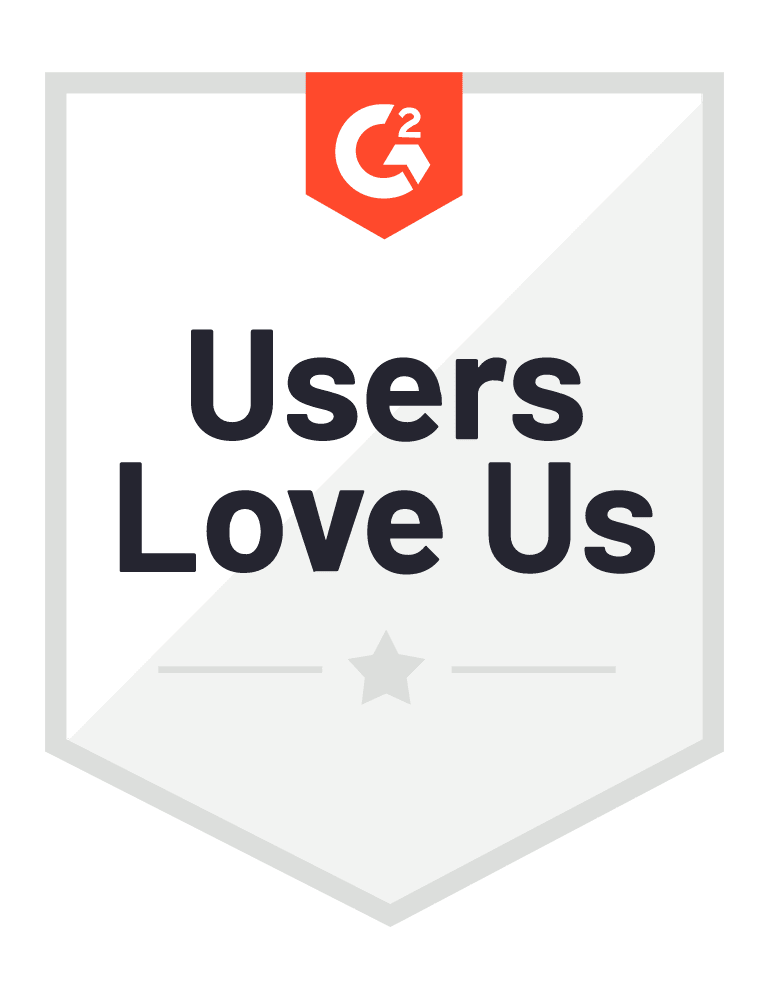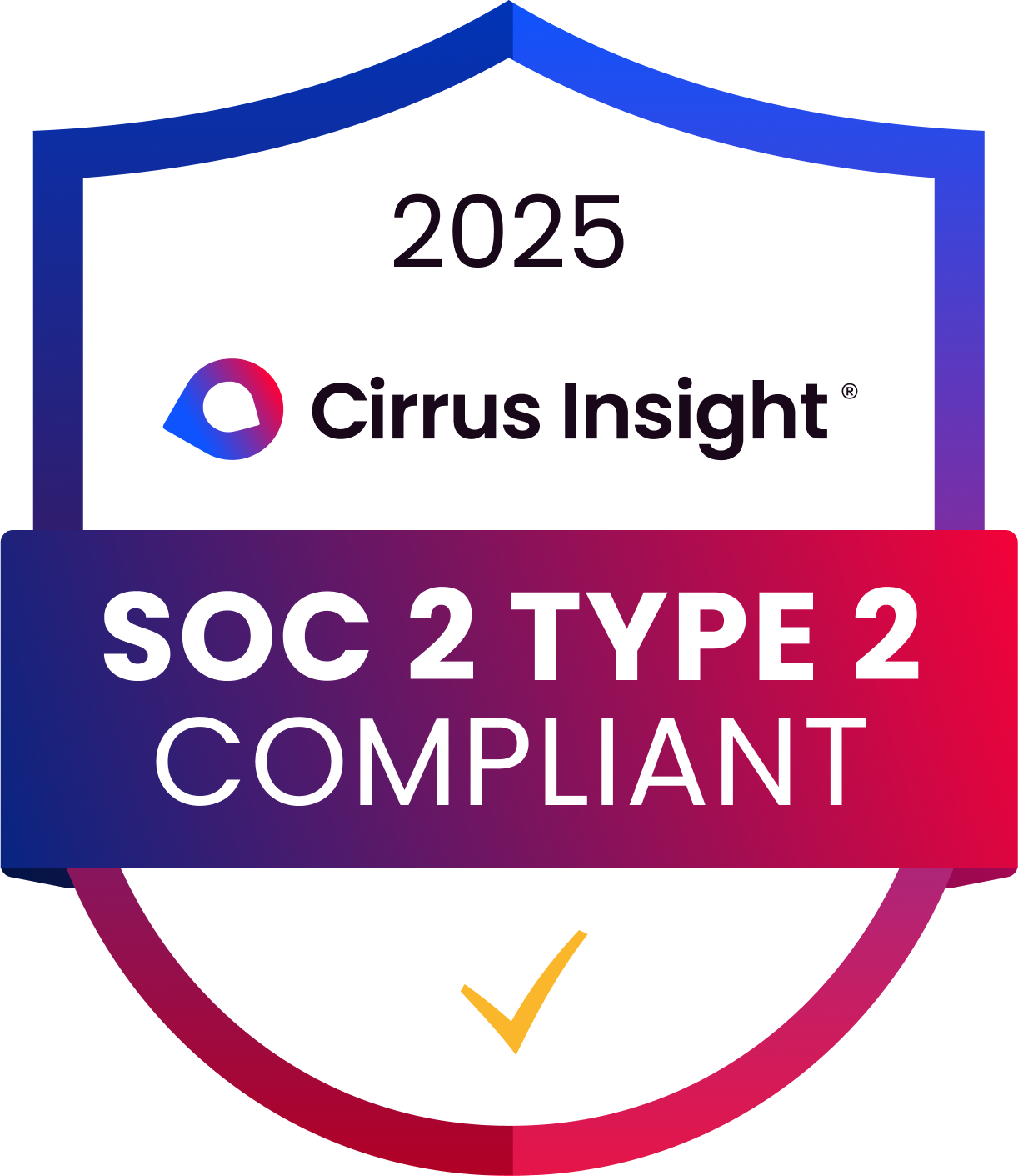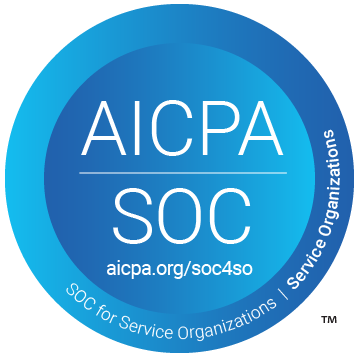- Solutions
-
Products
-
Resources
Sales Automation Tools | Cirrus Insight by Kristi Campbell View all Blog Posts >Get the App, Get the Sidebar, & Get Your Trial Going HereUnleash limitless growth opportunities by partnering with Cirrus Insight.
- Pricing
Master Class Part 2: 80% of Good Copywriting is Research
 Hey! Welcome back. This is part 2 of our Master Class series. This class is designed to help you improve your open rates and write copy that'll convert. If you missed the first part of our lesson, please click here.
Hey! Welcome back. This is part 2 of our Master Class series. This class is designed to help you improve your open rates and write copy that'll convert. If you missed the first part of our lesson, please click here.
If you'd like to live dangerously, you can ignore our advice and read ahead!
Just kidding. But really. You should read these things in order.
Ok. On to part two ...
1. Buyer Personas
Here’s a question you’ll be surprised to learn the answer to:
Have you talked to your customers lately? The most frequent response I hear is, “Nope.”
So, we’re going to take a minute or two here and talk about what a Buyer Persona is, and what a Buyer Persona is not. And I’m even going to give you the questions you need to ask to build a solid Buyer Persona
A Buyer Persona is not a fictional character with characteristics you’d like them to have, or think that they might have. (One thing you’ll find is that, once you start talking to your customers, your assumptions about them often go right out the window.)
A Buyer Persona is a real person, whose characteristics you have learned about by speaking with them about their real pain points.
I’m going to repeat that - A Buyer Persona is a real person. One whose characteristics you have learned about by speaking with them about their pain points.
If you don’t have a Buyer Persona in mind for any of your outreach efforts, you’ll either fail or pay way more money than you should be to get that person’s attention.
How to Construct a Buyer Persona.
- First, you want to interview at least ten people who match your target audience. If you do less than ten, you won’t start to hear patterns forming. The patterns are the most important aspects to construct an accurate persona (this template will provide some help).
- In interviewing your target audience, the goal for each interview is to answer the question: Does your target audience want the solution that you are selling.
- Why? Because you’re looking to identify your target market’s Buying Trigger. Or in less fancy words, the thing that caused this customer to act. So, every detail matters.
- Customer Problems, the most lucrative ones anyway, usually revolve around Health, Wealth, and Relationships. Framing what you’re selling in such a way that solves one or more of these pain points will always increase your probability of success.
- During the interview, you’ll want to pay close attention to the details. So, start your interview by asking, “Take me back to the day that you first decided to buy our product and tell me what happened?” You should always start with this question.
- Then you’ll want to ask,
- “How do you research companies like our company?”
- “What did you Google?”
- “What podcasts did you listen to?”
- What websites did you look up?
- What social media platforms did you pay attention to?”
- This information is crucial in order to identify the right platform to reach your target. It’s not enough to just use Google. Find out where they went after they searched on Google for a solution to their problem.
- And of course, you want to understand what they searched for, what terms did they use, what questions did they ask Google and YouTube as well.
- Next, you want to ask what stood out about you and what stood out about your competitors that they might have come across. What did your company do successfully? What did the other company not do well?
- Yes. There are still more questions to ask, which is why it’s important to pause here and encourage you to keep your question and answer sessions brief. Don’t waste anyone’s time. Make your customer feel comfortable, ask for their permission to record, (We recommend Riverside for its relative ease of use and high-quality recordings.) If you can, you should also compensate your customer for their time in the form of an Amazon Gift card.
- One tactic to think about later: You can spice up your customer Q&A sessions by using a service like OhYay, which gives you all sorts of fun background and screen sharing customization options.
- It’s imperative that you don’t just interview the customers you won. You need to also interview just as many customers that you’ve lost. I recommend making customer Q&As a regular part of your schedule and designate the knowledge keeper in your organization to keep track of that data to make sure the Buyer Persona is always up to date and accurate.
- You should do as many interviews as you can until you start hearing the same things over and over. Then you can stop.
- You probably don’t have time to do all that. So, how many interviews should you do?
- When conducting interviews with customers you lost, make sure to ask them why and how they came to the conclusion that your competitor was a better fit than you. What did you do wrong? What did your competitor do right? Buyer Persona Expert, Adele Revella, revealed that many customers ended up not purchasing a better solution because of their poor experience during the sales cycle.
- Finally, if you’re currently tracking your customers with Facebook Audience Data and Google Analytics, you’ll want to merge the two together along with the data you just collected from interviews. Why? You can and will interview as many of your customers as you can, but you can’t catch them all. So although the Buyer Persona is heavily qualitative, this is where you want to make use of the quantitative data to see if you can spot additional patterns of interest. The more accurate you are in analyzing the data, the less money you’ll have to spend later on advertising. That’s because you’ll be creating content that’s custom-made for your customer and solving their problem.
 If you follow the links included below this video, you’ll find a free Buyer Persona Template and questions you can ask to start gathering that information.
If you follow the links included below this video, you’ll find a free Buyer Persona Template and questions you can ask to start gathering that information.
Before we move on, let’s recap the questions you should be asking in order to construct your buyer persona:
Remember. The goal of each of your 10 interviews is to answer the following question:
Does your audience want the solution you’re selling to their problem?
Questions:
- Take me back to the day when you first decided to buy ______________ and tell me what happened?
- How do you research companies like ______________.
- “What did you Google?” (You want to get at what the exact search terms used were.)
- What did you listen to? What did you watch? What medium did you use to learn more about ___________?
- What stood out to you about _____________?
- What stood out to you about __________________’s competitors?
- What didn’t you like about ____________________’s competitors offerings?
- What did the competitors not do well?
- What did we do successfully to win your business?
Bonus Questions:
When talking to a customer whose business you did not win, make sure to ask:
- What did we do wrong to make you conclude that we weren’t the solution for you
- How did you come to the conclusion that our competitor was a better choice for you?
2. Your Value Proposition
So, by now, I’ve stressed how important it is to get out there and speak with your customers and potential prospects.
In the event that message hasn’t sunk in, let me repeat it real quick: You want to know your prospects inside and out. How do you do this? Take them out to eat. Go to conferences where they are having conversations about their problems and listen. Do whatever it takes to know your customer so well that you won’t have trouble coming up with headlines that will capture their interest.
It’s important to have a deep understanding of how the prospect thinks because, as nobel prize winning psychologist Daniel Kahneman and Amos Tversky demonstrated, when people are dealing with uncertainty and anxiety they fall back to a very simple mental framework to make decisions. And so, when using the Internet, my hypothesis is that people default back to three questions that help inform almost all of their decision making:
- What’s in it for me?
- What are my three biggest problems that I’m facing right now?
- How will doing this thing (that you’re proposing) make me look among my peers?
The only way you will be able to answer those questions and write headlines and pitches that get your prospects attention is by knowing the answers to these three questions. You have not succeeded in this endeavor until you can answer, with your eyes closed, what your customer’s top three problems are. Why? Because you’ll need that information to craft a value proposition that makes what you’re selling irresistible.
You have not succeeded in this endeavor until you can answer, with your eyes closed, what your customer’s top three problems are. Why? Because you’ll need that information to craft a value proposition that makes what you’re selling irresistible.
The only way to succeed at anything in life is to give more than you get. And ideally, you’re giving without the assumption that you’ll get something in return, but moral dilemmas and ethics are beyond the scope of today’s class.
What is in the scope of this master class is writing great copy, because great copy means great headlines, and great headlines means emails that get opened, and opened emails often lead to deals being closed.
So, before we get to the headlines, there’s one more thing we have to do, and that is to generate your value proposition based on the answers to the previous three questions.
The goal is to craft a value proposition so powerful, that your customer feels stupid not to act on it.
Questions When Crafting a Value Proposition
- Does it solve the prospect’s problem?
- Will it help them achieve their desired outcome?
- How quick will the customer see these outcomes?
- Does the thing you’re proposing require a lot of effort to make it work?
The answers should always be: Yes, Yes, Almost immediately, and no.
Easier said than done. So you’ll want to tweak and modify what you’re offering until you get to Yes, Yes, Almost Immediately, and No.
Framework to Help Craft a Great Value Proposition
- Identify what your prospect’s dream outcome is.
- Identify all the problems your prospect faces in achieving that outcome
- Identify all the solutions to that problem
- Identify one solution that could give your customer a quick win right now while also helping them understand how long it will take for them to successfully reach their dream outcome. (A quick win will help them commit to whatever you’re selling over the long term because they will immediately see the value in it.)
- Write down how you plan to deliver these solutions to the prospect.
- Write down ways to streamline these solutions in such a way that they are easy to act on for the prospect.
That’s it. That’s the formula. Yes, Yes, Almost Immediately, and No. Phrase your findings in such a way that answers those questions and you’re now that much closer to getting and closing a sale.
And now, here is an exercise to help you write a killer value proposition:
If/Then Exercise
Step 1
Write down as many customer pain points as you can after the word IF. This will help you think in terms of the who, the what, and the how, which is how your value proposition should be framed.
In this example, we’re going to use a webinar.
E.G. If a CMO of a B2B SAAS company (who) wants to produce a high quality webinar (the what).
Step 2
Now, write down as many of your solutions, provided by your product, after the THEN:
If a CMO of a B2B SAAS company (who) wants to produce a high quality webinar to attract prospective customers (the what), then … they need to learn about story structure. (The how).
Now, set a timer for 15 minutes, and write as many HOWs as you can in 15 minutes.
A Secret About Why We Buy What We Buy
Now I’ll tell you the secret: People don’t like to be sold to, which is why it’s so important to get to know them so well so that you can craft copy in such a way that solves their problems without them feeling like they’ve been sold something.
One thing we’re working on the marketing team here at Cirrus Insight is creating mini videos on email marketing that clearly demonstrate the value of using Cirrus Insight to complete the task we’re discussing this week, without actually selling Cirrus Insight directly.
So we show the product, in action, as we solve a customer’s problem.
But that’s not the secret: The secret is that people buy something for two reasons:
- First to solve their problem
- But second, they want the benefit behind the benefit of the problem your product solves.
Put this another way: When you buy Domino’s, the benefit is the pizza, sure, but there is an added benefit of getting the pizza delivered to your house quickly. So they’re also selling you speed and convenience in addition to the pizza. That’s the benefit behind the benefit. You’re buying pizza, but you’re also buying reliability and speed in the delivery of that pizza.
That’s the benefit behind the benefit. You’re buying pizza, but you’re also buying reliability and speed in the delivery of that pizza.
One thing we have zeroed in on is that Cirrus Insight saves you time, but time to do what? So an example of solving a problem and providing a benefit behind the benefit is that we save sales professionals time that they can use to invest in upskilling themselves to … You guessed it: Get more sales.
Step 4
How to Create Infinite Headlines
I’m going to give you two different ways to generate infinite headlines.
But first, here are some general guidelines you need to follow first when it comes to writing headlines.
First, the basics:
- Keep subject lines to 12 words or less. 6-7 Words is even better.
- Use Adjectives
- The #7 does really well as do other odd numbers
- Make the headline’s rationale unique (It must answer the question for you of “Why am I sending this?” And for your prospect, “Why am I reading this?”)
- Make the headline ULTRA specific (The customer should feel like you’re walking into a conversation they’re already having with themselves.)
- Always deliver on what your headline promises
- Use the words What, When, Why, and How
- Use things people like, provide in your headline (and copy!): Tips, Reasons, Lessons, Tricks, Ideas, Ways, Principles, Facts, Secrets, and Strategies
And now, some guiding principles:
- Remember that the subject line is NOT where you make your sale. It’s only to get them to open the email.
- Let your site and its content do the selling for you. With your emails, you just want a reply or a link click, if you push too hard on sales you may wind up in the spam folder.

- This is why lead magnets are so effective. If you have a simple one-pager as a lead magnet, that’s something you can send to a prospect and have them open your email, click on something in your email, and then download a lead magnet that is helpful and useful in solving one of their pain points.
- Here's a great lead magnet template to get started.
- Note: You never want to send an attachment to anyone. Ever. Even your best friend. When possible, point people to a place on your website where they can enter some information (the less they are required to enter, the better). Once you have the info you need, you can then take them to a page that has the lead magnet available to download, view, or (if you really want to make a good impression), listen to.
- Prospects need to spend up to 7 hours with you before they decide whether or not they’re going to buy something from you. So if you just send an email and expect to make a transaction, you might be successful. But …
- But the probability is higher if you were to send an email, get the prospect to open it with a compelling headline, and include a link to a great, short, and simple lead magnet for them to click on that helps to address one of their problems.
- This begins the clock on those 7 hours between you and your customer.
I’m now going to share with you some headline templates and two other headline writing formulas you can use to create infinite headlines:
- How to Survive / How to Overcome X
- The Biggest Mistake X Made (X here can be a celeb or brand or groups of people)
- The Real Secret to X
- The Fastest way to X (DO NOT EXAGGERATE OR MISLEAD, ALWAYS DELIVER on what your headline promises in your email.)
- Here’s a shortcut for X (This works REALLY well with a lead magnet something that is a simple and low commitment like a one-pager and solves a problem)
- How I X
- About Your X
X = Whatever it is you’re trying to position or sell.
Dan Kennedy’s Headline Writing Formula
Another formula you can try is Number or Trigger word + Adjective + Keyword + Promise
Another (more serious) example:
Take a bold promise like “selling your house in a day.”
Apply the formula above and you get: “How You Can Effortlessly Sell Your Home in Less than 24 Hours”
Note that odd numbers always work better than even numbers, and the stranger or more interesting the number, the better.
Neil Patel’s SHINE Headline Writing Formula
- S – Specificity
- H – Helpfulness
- I – Immediacy
- N – Newsworthiness
- E – Entertainment value
Think of Neil’s formula more as a series of questions your headline should answer: Is it specific to your prospect? Is it helpful? Is it something they need to act on right now? Is it newsworthy? Is it entertaining? The more times you can say yes to each of these questions, the better your headline will be.
The more times you can say yes to each of these questions, the better your headline will be.
Ok. So I promised two ways for you to generate infinite headlines. First, I’m going to show you how America’s finest news source, The Onion, does so in 15 Minutes.
Write Like The Onion in 15 Minutes a Day
Gather all of your information together and review it. Make sure you understand the persona you are trying to reach, and the tone/voice and perspective of your company.
Then, set a timer for 15 minutes.
In those fifteen minutes, write down as many subject lines about your product or offering as you can.
This is going to be REALLY hard at first. The point here is to do this exercise once a day for 90 days. Once you’ve done something with focus and consistency for 90 days, a lot of amazing things will happen. But of those amazing things, for our purposes, the one to pay attention to is that you will now be able to churn out headlines better than 99% of people on this planet, thus, infinite headlines in as little as 15 minutes every day.
Cool, right?
This is the first part of the process for Onion writers. (The second is that they then get together once a week and share their headlines. Hundreds of headlines are considered, but only a dozen are selected each week. We’ll help you whittle down your headline options using A/B testing at the end of this class.)
And if you stick with something for 90 days, it’ll also become a habit, which means you won’t have any problem setting aside 15 minutes each day. In fact, you’ll look forward to it.
But what do you do with all these headlines?
Go back to our friends at Sprout.io (you should have this set up by now if you’re following along with this class.) Set up a new Tree, and list your headlines. Do this every day.
In time, this will give you a massive list of headlines you can use for A/B testing before you send your emails out. (We’ll talk about A/B testing at the end of this master class.)
The point here is to corral all of your headlines in one place so you don’t lose them. That’s why I like dedicated uses of cloud based services like Sprout. You don’t need to scramble to find your stuff. You have it all in one place and can access it from anywhere.
This is going to be important because, as you get into the rhythm of writing headlines, good ones are just going to come to you, and you’re going to want to quickly write it down and collect it with the others.
So, what’s the other way to generate infinite headlines? Let me introduce you to our friends at Jasper.ai
Jasper is not a cheap option, just to be clear. In fact, if you’re on a tight budget or if your company has a tight marketing budget, we recommend the 15-minute-a-day exercise.
But if you have the extra money, or you don’t have the time to dedicate 15 minutes every day to writing great headlines, then Jasper is worthy of your time and consideration.
It will take us a couple of hours to explain the intricacies of Jasper, so I’m just going to give you a quick high level tutorial here on producing great headlines, and if you’re interested in learning more, we recommend you check out their Boot Camp to get started. It’s free and included in the video description here.

.png?width=1268&height=1772&name=Sidebar-C%20(1).png)



